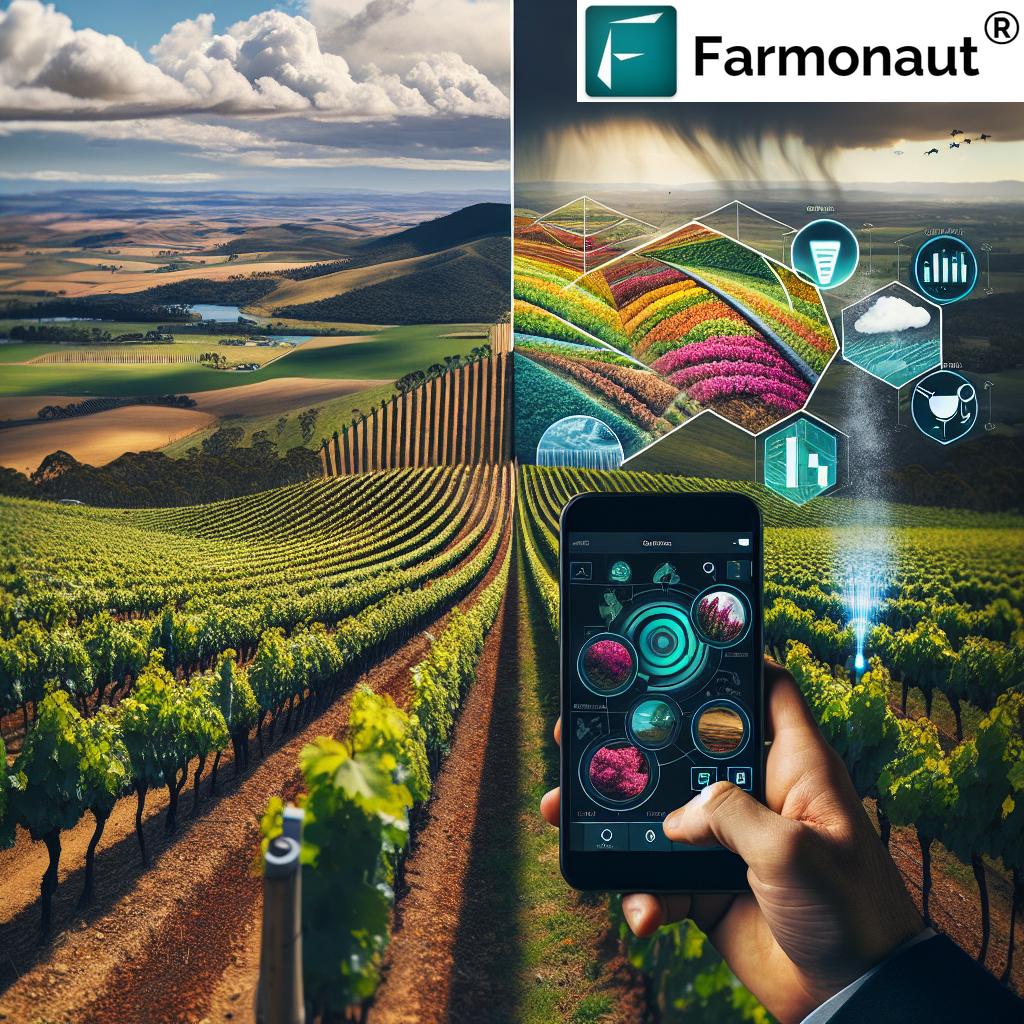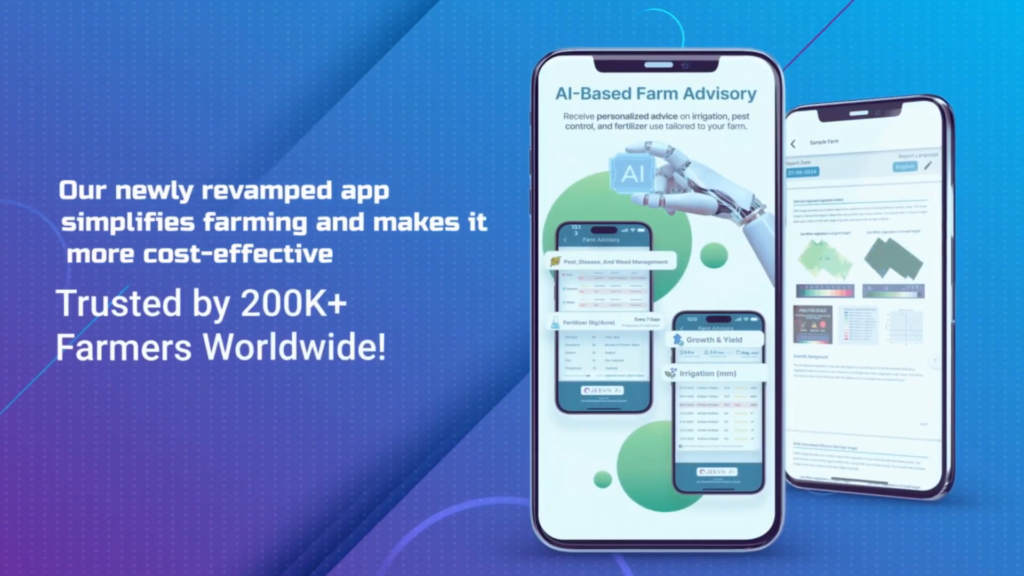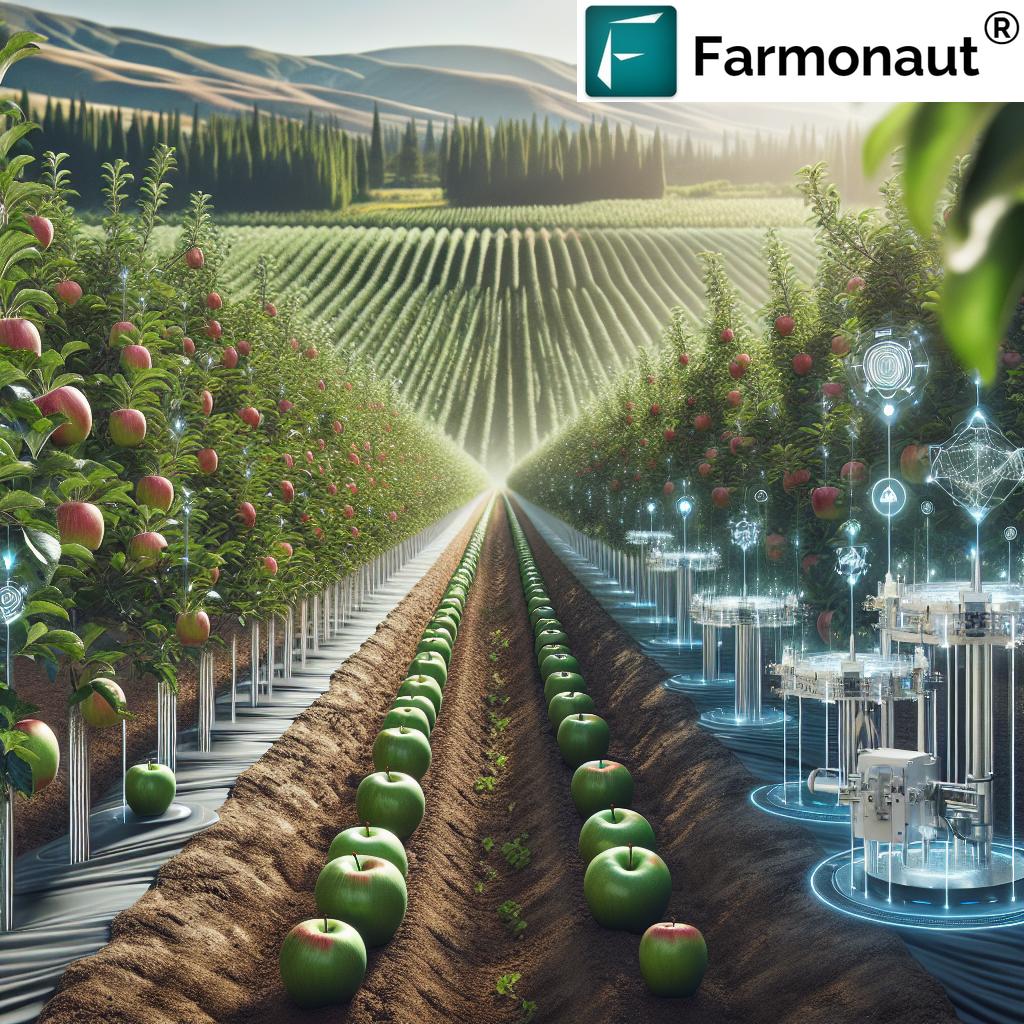Beets Harvesting, Cassava & Combine Harvester Video Insights: Advancements Driving Agricultural Efficiency & Sustainability in 2025
“Modern combine harvesters boost beet harvesting efficiency by over 40%, revolutionizing root crop collection in large-scale farms.”
Table of Contents
- Introduction: The Drive Towards Agricultural Innovation in 2025
- Beets Harvesting: Precision, Efficiency, and Advanced Mechanization
- Cassava Harvester Machine: Mechanizing Tropical Root Crop Harvests
- Combine Harvester Video Insights: Revolutionizing Cereal Crop Harvesting
- Comparison Table of Modern Harvesting Machines (2025)
- Farmonaut: Satellite Technology and Smart Data Integration in Harvesting
- Future Trends in Farm Management and Food Security
- Frequently Asked Questions (FAQ)
- Conclusion: Forging the Path to Sustainable, High-Efficiency Agriculture
Introduction: The Drive Towards Agricultural Innovation in 2025
In today’s rapidly evolving landscape of global agriculture, beets harvesting, cassava harvester machine, combine harvester video—these phrases represent more than just the latest farm technology trends. They embody the spirit of innovation, the push for efficiency, and the global pursuit of sustainability that defines modern farming practices in 2025. As we move towards increasingly mechanized and data-driven crop production, understanding the transformative role of harvesting technologies in root crops like beets and cassava, and in staple cereals, becomes essential for farmers, agricultural professionals, and society at large.
Beets and cassava are two foundational root crops that have fed billions and fueled industries ranging from sugar production to biofuels. Alongside these, grains harvested by the legendary combine harvester form the backbone of food security worldwide. The year 2025 marks a new era: advanced machines equipped with cutting-edge sensors, AI, and eco-friendly powertrains are transforming farming operations. They reduce post-harvest losses, boost productivity, and enable a level of precision and sustainability unthinkable just a decade ago.
This blog explores in detail the rise of beets harvesting, cassava harvester machine, combine harvester video technologies, illustrating how innovations are reshaping everything from soil health to real-time yield mapping, and even broader supply chain management. Let’s delve into the specifics of each machine, discover the range of advanced features they offer, and see how tools like Farmonaut’s satellite technology boost their power for farmers on the ground.
10 Low-Investment, High-Profit Agri Business Ideas in 2025
Beets Harvesting: Precision, Efficiency, and Advanced Mechanization
Beets harvesting stands at the forefront of modern root crop agriculture in 2025. Beets—especially sugar beet—remain a key to both food and biofuel industries, making the efficiency and sustainability of their collection critical. Cutting-edge beet harvesters have replaced traditional methods once dominated by laborious, manual digging and lifting. Let’s examine how technological advancements are driving this transformation.
The Evolution of Sugar Beet Harvesters
Until recently, farmers relied on teams of workers to unearth beets—a process prone to crop damage, loss, and soil compaction. As demand for efficiency and sustainable practices increased, manufacturers pushed the envelope with sophisticated beet harvesting machines. By 2025, the latest harvesters offer:
- Delicate lifting mechanisms that minimize damage to beet roots, thus preserving quality and maximizing yield.
- Advanced sensors and automatic depth control for precision in root extraction.
- Soil engagement systems engineered to reduce compaction, thus supporting soil health and enabling sustainable rotation farming practices.
The integration of automation and robotics ensures that each beet is delicately lifted without unnecessary loss or injury, significantly reducing manual effort and operating costs.
Precision GPS and Real-Time Yield Mapping
A hallmark of beets harvesting in 2025 is the use of GPS-enabled yield mapping systems. These smart technologies let farmers:
- Monitor field performance as beets are harvested in real-time.
- Optimize harvesting timing based on ripeness, weather, and soil conditions.
- Coordinate logistics for truck arrival, cleaning, and storage on-the-go.
Yield maps generated during the beet harvesting process give actionable data for future planting, fertility management, and even market logistics. When integrated with satellite monitoring platforms like Farmonaut, these systems provide end-to-end transparency and data-backed decision making.
2025 Veg Equipment Boom ? Smart Farming, AI Telematics & $2.3B Market Powered by Farmonaut
Sustainability and Environmental Controls in Beet Harvesting
Amid climate change concerns and growing regulation, beet harvesters in 2025 come equipped to meet sustainability goals:
- Fuel-efficient engines (with electric and hybrid options) that dramatically reduce fuel usage, emissions, and costs — aligning root crop harvesting operations with modern sustainability standards.
- Emission controls and improved hydraulic systems for cleaner, quieter, less impactful fieldwork.
- Minimal soil disturbance designs, ensuring better nutrient cycling and healthier future crops.
Furthermore, enhanced carbon footprinting technology enables field operators and farm managers to monitor and optimize harvesting processes with environmental stewardship at the forefront.
Impact on Global Sugar and Biofuel Industries
With global sugar demand and biofuel production needs rising, the ability to rapidly and sustainably harvest beets is critical. Modern harvesting machines ensure:
- High recovery rates and reduced post-harvest losses, crucial for the economics of sugar beet and energy crop production.
- Rapid field clearance, enabling rotational planting systems and increased productivity.
How AI Drones Are Saving Farms & Millions in 2025 ? | Game-Changing AgriTech You Must See!
Key Takeaways for Beet Harvesting in 2025
- Integration with smart software—including platforms like Farmonaut—for yield monitoring, reporting, traceability (see traceability solutions), and compliance.
- Reduced soil compaction and damage to crops, supporting both field productivity and sustainable rotations.
Cassava Harvester Machine: Mechanizing Tropical Root Crop Harvests
“Cassava harvester machines can process up to 1.5 hectares per hour, showcasing rapid advancements in sustainable agriculture technology.”
Cassava is a staple crop across vast stretches of tropical regions in Africa, Asia, and South America. Famous for feeding local populations and powering industries such as starch and ethanol production, cassava’s unique underground tubers make harvesting especially challenging. For decades, its manual, labor-intensive extraction limited yield and scalability.
Today’s cassava harvester machines epitomize how modern harvesting technologies can transform entire sectors almost overnight. Let’s break down why.
Challenges of Traditional Cassava Harvesting Methods
- Manual digging involves extensive labor, often under hot conditions.
- Inefficiency and inconsistency—cassava roots are easily damaged or missed entirely, leading to losses.
- Soil disturbance and erosion due to repeated digging.
- High harvesting costs, limiting profitability for farmers, and making large-scale cassava farming difficult.
Mechanizing Cassava Harvest: Smart Machines for 2025
With the emergence of specialized cassava harvester machines, root crop extraction is now a streamlined, single workflow process. These machines offer dramatic improvements:
- Mechanical digging arms and rotary blades that gently penetrate soil at optimal depths (adjustable via sensors), ensuring minimal tuber breakage.
- Conveyor and cleaning systems that separate soil and collect tubers directly onto transport units.
- IoT-enabled modules providing real-time diagnostics, maintenance alerts, and performance analytics for operators.
- Improved soil separation technology to reduce loss, enable cleaner tubers, and prepare harvested cassava for rapid processing.
Smart Farming Future : Precision Tech & AI: Boosting Harvests, Enhancing Sustainability
Benefits: Efficiency, Sustainability, and Farmer Empowerment
By 2025, the cassava harvester machine delivers:
- Processing rates of up to 1.5 hectares per hour, enabling rapid scaling of cassava farming for global food and bioenergy needs.
- Consistently higher tuber recovery rates, with less root breakage, supporting crop quality and farmer profitability.
- Reduced post-harvest losses and labor costs by orders of magnitude—key for both food security and industrial starch/ethanol production.
- Opportunities for more sustainable soil management, as advanced soil separation systems cut down on unnecessary disturbance and depletion.
On top of these, real-time monitoring and integrated management tools allow operators fast response to maintenance needs, breakdowns, or inefficiencies, directly improving uptime and operational costs. Using satellite-powered solutions like Farmonaut fleet management streamlines logistics for harvesting, transporting, and processing root crops across diverse geographies.
Smart Farming Future: Precision Tech & AI Boosting Harvests, Enhancing Sustainability
Transformation Across the Cassava Supply Chain
With mechanized harvesting:
- Downstream industries benefit from lower raw material costs, consistent supply, and higher quality, further supporting investments in cassava bioenergy.
- Smallholders and cooperatives access scalable, affordable cassava harvester machines through subscription or service-based models, integrating seamlessly with satellite-enabled farm management platforms.
As these innovations become widespread, we witness rapid transformation in both livelihoods and food systems across tropical regions.
Maximize Your Harvest: Ultimate Guide to Grain, Vegetable, And Crop Yield Calculator
Combine Harvester Video Insights: Revolutionizing Cereal Crop Harvesting
No technological overview of modern food production would be complete without highlighting the combine harvester—a machine that, since its 19th-century invention, has been at the heart of grain and cereal crop harvesting. In 2025, the combine is reborn: smarter, greener, and more connected than ever. Our review of the latest combine harvester video insights underscores the evolution underway.
The Anatomy of a Modern Combine Harvester
- AI and Multispectral Imaging: Modern combines use AI-driven algorithms and advanced cameras to analyze grain, field, and soil conditions in real-time.
- Precision Threshing, Separation, and Cleaning Systems: Adaptive mechanisms shift automatically based on crop type and moisture, ensuring minimal grain loss and the highest possible quality.
- Smart Fleet Management and Communication: Operators link their harvesters via satellite or IoT networks for unified operations, field mapping, and post-harvest logistics.
Combine Harvester Video Insights: What’s Driving the 2025 Revolution?
- Self-optimizing harvesters that “learn” from each pass, reducing fuel usage and emissions through precise, efficient routing (route optimization minimizes overlaps and saves costs).
- Electric and hybrid combine harvester models now account for a growing share of field equipment sales, offering lower lifetime costs and a far cleaner environmental footprint.
- Integration with drones and video-based remote monitoring enhances situational awareness, supporting proactive maintenance scheduling and pest/disease detection.
- On-the-fly data transfer to cloud-based farm management systems (like Farmonaut), enabling real-time adjustment of settings and instant record-keeping.
Watch the videos below for visual insights into how technology is transforming combine harvester operations across cereal and grain fields:
Mastering Potato Growing : From Planting to Pest Control – A Complete Guide for Healthy Crops
Sustainability Innovations in Cereal Crop Harvesting
- Significant cuts in greenhouse gas emissions due to electric/hybrid engines and precision fuel management.
- Minimal soil disturbance through lighter machinery and adaptive tire designs.
- Block-chain based traceability and reporting—when combined with solutions like Farmonaut product traceability, food producers meet global market transparency demands and regulatory requirements.
With high-throughput, adaptive combines, cereals can be harvested at record speeds, meeting the needs of a growing global population and international food markets.
Comparison Table of Modern Harvesting Machines (2025)
| Machine Type | Key Technology Features | Estimated Productivity (tons/hour) | Fuel Efficiency (liters/ton) | Sustainability Innovations | Sample Video Insights |
|---|---|---|---|---|---|
| Beets Harvester | Automation, Precision depth sensors, Real-time GPS yield mapping | 30–40 | 1.5–2.0 | Minimal soil disturbance, hybrid engines, emission controls | Reduced crop loss, improved logistics—see harvesting in Veg Equipment Boom |
| Cassava Harvester | Adjustable digging systems, IoT diagnostics, Soil/tuber separation | 20–30 | 1.2–1.8 | Reduced tuber breakage, enables large-scale farming, less manual labor | High-speed root extraction, video demo in Smart Farming Future |
| Combine Harvester | AI, Multispectral imaging, Remote fleet, Data integration | 45–55 | 1.0–1.4 | Electric/hybrid, route optimization, blockchain traceability | Optimized grain, clean field operations; check AI Drones Saving Farms |
Farmonaut For Crop Area Estimation
Farmonaut: Satellite Technology and Smart Data Integration in Harvesting
To truly harness the efficiency and sustainability benefits of the latest harvesting innovations, modern farmers are turning to satellite-powered intelligence. This is where Farmonaut’s platform stands out. We give the agricultural world a powerful vantage point—one that bridges machine, field, and cloud.
- Satellite Image Monitoring: Using high-resolution, multispectral satellite imagery, our platform identifies crop growth, soil condition, and vegetation health (NDVI)—vital information for scheduling and executing precision harvesting.
- Jeevn AI Advisory: We deliver real-time, field-specific advice based on weather trends, emerging threats, or growth anomalies, supporting both pre-harvest planning and day-of operations.
- Blockchain-Based Traceability: Growers can leverage our traceability solution to assure supply chain partners and consumers of product authenticity and food safety.
- Fleet and Resource Management: Easily coordinate combine, beet, or cassava harvester fleets using our fleet management suite to minimize downtime and cut operational costs.
- Environmental Impact Tracking: With our carbon footprinting features, large and small farmers can monitor, report, and reduce field emissions and resource use across the entire harvesting lifecycle.
- API & Developer Integrations: For custom needs, our API and Developer Docs empower agricultural businesses to integrate world-class agricultural data directly into their own precision platforms, apps, or ERP systems.
Accessible on Android, iOS and the web, our solutions are built for farmers, agri-businesses, and governments alike—scalable for operations of all sizes and customizable to specific field and machine needs.
Farmonaut Subscription Plans
Want to experience the full power of satellite-based crop and farm management, including precision harvesting insights? Subscribe to a Farmonaut plan below:
Future Trends in Farm Management and Food Security
By 2025 and beyond, the drive towards precision, sustainability, and advanced technologies continues to accelerate. Here’s what agricultural stakeholders should expect:
- Continued Rise in AI and Robotics: More intelligent, autonomous harvesters—capable of dynamic decision-making, obstacle navigation, and task automation—will arrive on farms everywhere.
- End-to-End Data Synchronization: Everything from beets harvesting to final produce shipping will be seamlessly documented for food safety and regulatory compliance using cloud, blockchain, and satellite solutions.
- Increased Emphasis on Environmental Impact: With consumers demanding “clean, green” food and public policy incentivizing sustainable practices, carbon footprinting and responsible harvesting will become default standards. Learn more about agricultural sustainability with our carbon footprinting platform.
- Access to Financing and Insurance: Satellite data increasingly underpins crop loan underwriting, yield-based insurance, and risk reduction for smallholder and enterprise growers worldwide.
- Digital Advisory and Machine Learning: Field-specific, AI-powered agronomy advice will be available in real-time, not just for planting, but for in-season and harvest-stage decisions. Our agronomy advisory app puts these insights in your hands.
Frequently Asked Questions (FAQ)
-
How have harvesters improved crop efficiency in 2025?
Modern beets harvesting, cassava harvester machine, combine harvester video technologies use AI, automation, and sensing systems to optimize operations, minimize wastage, and improve yields, greatly boosting efficiency for all crop types. -
What are the main benefits of using a cassava harvester over traditional methods?
Cassava harvester machines provide rapid, gentle root extraction, drastically reduce manual labor, and minimize tuber breakage and post-harvest loss, allowing increased scale and quality in cassava production. -
What sustainability innovations are modern harvesters equipped with?
Eco-friendly engines (including electric/hybrid), improved soil engagement, emission controls, and traceability systems to minimize environmental impact while maximizing output. -
How can Farmonaut help in modern harvesting management?
Our platform leverages satellite imagery, real-time monitoring, AI-agronomy advisory, fleet management, traceability, and more to enable data-driven, highly efficient, and sustainable harvesting operations across multiple crop types. -
Are these technologies accessible for small and medium-scale farmers?
Yes. Modern machines and digital services, especially subscriptions and mobile app-based platforms, are designed to be affordable and scalable—from individual fields to corporate farms. -
Can harvesting data be integrated with insurance, financing, and compliance?
Definitely. Farmonaut’s platform provides seamless integration with loan and insurance products, blockchain-based traceability systems, and export dashboards required for regulatory reporting.
Conclusion: Forging the Path to Sustainable, High-Efficiency Agriculture
The journey through beets harvesting, cassava harvester machine, combine harvester video advances makes clear: the convergence of smart mechanization, digital intelligence, and sustainability is more than a trend—it’s the new foundation for global food production in 2025.
As farm sizes grow and consumer demands evolve, only those who embrace
advanced technologies, automation, and real-time data solutions will lead in productivity, reduce costs, and deliver on the promise of true agricultural sustainability. Whether in beet fields of Europe, cassava plots across Africa and Asia, or the cereal breadbaskets of the Americas, the future of harvesting is precise, efficient, and accountable.
By integrating world-class platforms like Farmonaut, the agricultural industry gains the confidence to innovate faster, support global food security, and build resilient systems—all while minimizing environmental impact and maximizing economic return.
We invite you to join the future—leverage the best of both what machines and satellites can offer, and ensure your farm or agribusiness truly thrives in 2025 and beyond.
Explore More
Download the Farmonaut app for complete crop monitoring & harvesting intelligence.
Developers and agri-businesses: Try our API or consult our API Docs to build the next-generation of precision farming solutions!











